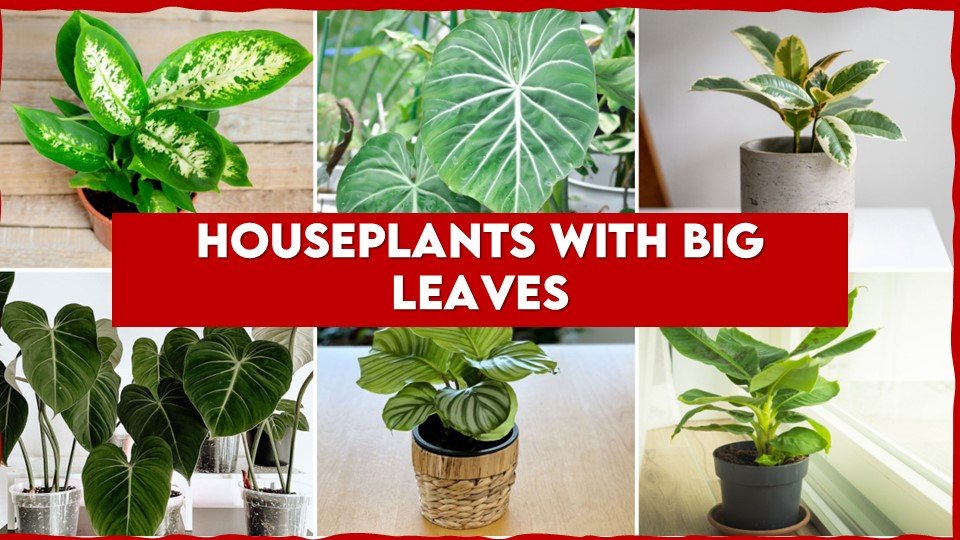15 Types of Houseplants With Big Leaves
To fill the empty spaces in your house with a touch of greenery, let me introduce different types of Houseplants with big leaves. These are perfect to beautify your window sills, tables, bookshelves and all the stagnant and boring walls.
Having plants in your home not only looks rich and aesthetic but also provides you with fresh air and peace of mind. If you ever had plants in your home before, you must have experienced the joy of growing them, and if you haven’t, then this is the right time to challenge yourself with the duty of taking care of them.
No one is unprecedented with the beauty of houseplants like Monstera with unique leaves, Philodendrons of different forms, Bird of paradise with unique flowers or Rubber plants with stead posture. But what suits you more? Which plant will be best for your house? Let us find out in this article.
Before jumping in, ensure that you have good space and the right proportion of sunlight coming into your house. After all, the growing habit of these certain houseplants is a little trickier than the ones growing in your garden.
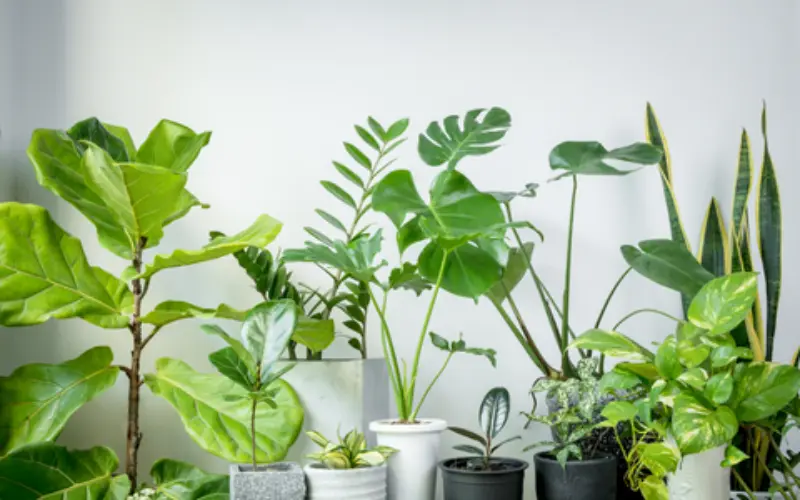
Types of Houseplants with Big Leaves
1. Swiss Cheese Plant or Monstera
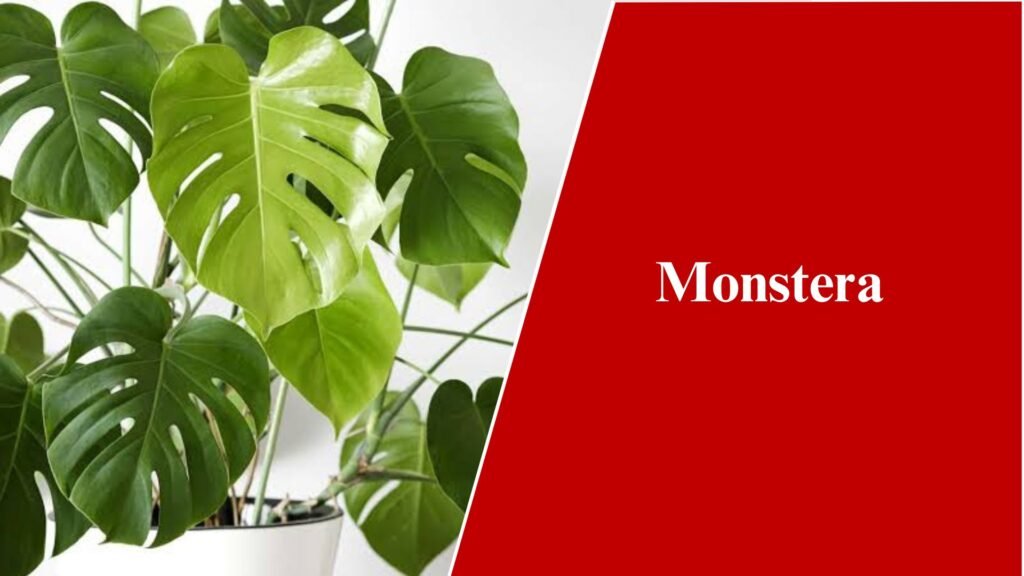
Monstera is a weirdo for sure. With its huge fenestrations in leaves, it never goes unnoticed. There are many varieties of monsteras available in your local nurseries and the best part is, you can propagate them via stem cuttings once they are ready for adulthood. In natural habitats, it also produces a delicious fruit with many nutritional properties.
If you have huge spaces to cover, then this one can do the job, because it can reach up to a height of six feet with its glossy and dramatic leaves. It is also one of the fastest-growing houseplants. But always remember that monstera is intolerant to frost and slightly toxic to pets and children when ingested.
| Common Name | Swiss Cheese Plant or Monstera |
| Scientific Name | Monstera deliciosa |
| Family | Araceae |
| Sunlight | Indirect / Partial Shade |
| Soil | Well drained, better with peat introduced. |
| Water | Once a week or when the upper few inches of soil become completely dry. |
| Hardiness zone | 10-12 |
| Height | 2-3 m |
2. Philodendron
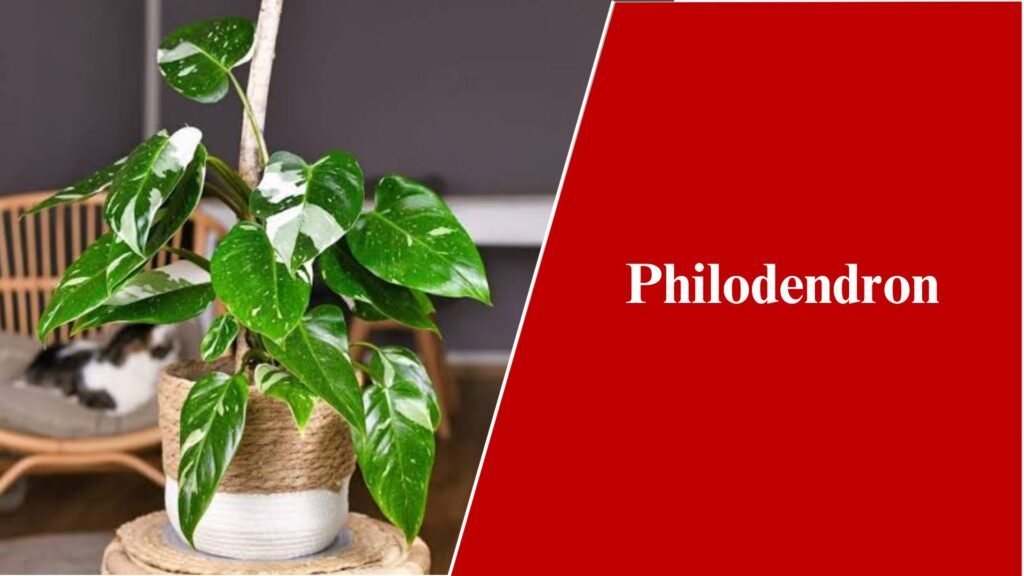
Philodendrons are similar to monstera in many terms, except for the fenestrations the giant species of Philodendrons can be mistaken for monstera. To find nutrients, these act as a walker in the wild. But it is one of the best houseplants due to its diversity in terms of size and adaptation.
There are a few species of Philodendron which are very small and used for table decor or hanging basket purposes. But few of these are giant with huge heart-shaped shiny leaves. It is never a disappointment in terms of its growth either. It can reach the maximum height within a year, after that you may prune and propagate it via stem cuttings.
| Common Name | Philodendron |
| Scientific Name | Philodendron spp. |
| Family | Araceae |
| Sunlight | Bright/ Indirect Light |
| Soil | Well-drained and Loamy |
| Water | Water when the upper few inches of soil becomes dry. |
| Hardiness zone | 9-11 |
| Height | 1- 3 m(depends on species) |
3. Bird of Paradise
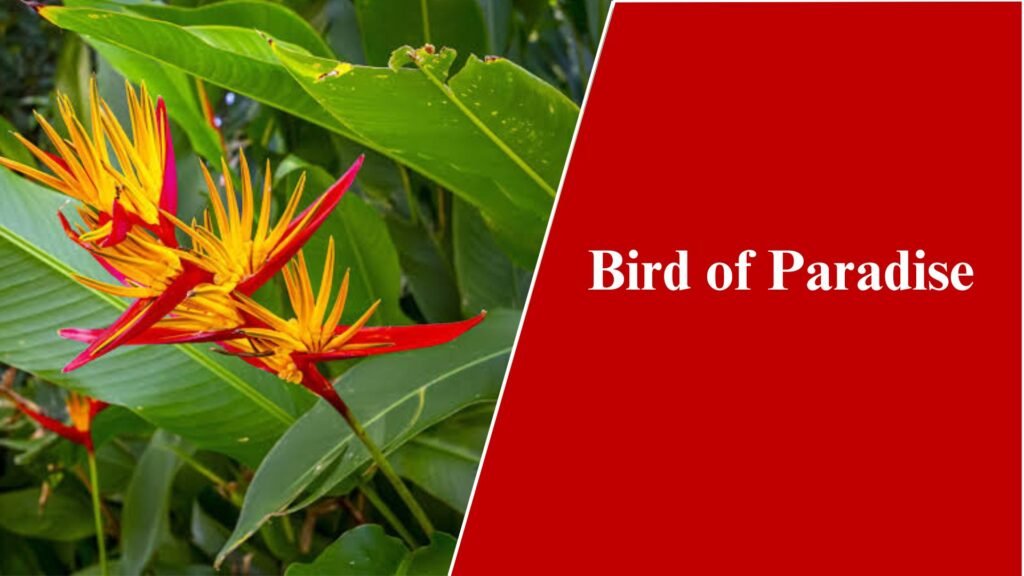
There are usually two species of these plants that have been adopted as houseplants, that is, S. nicolai and S. reginae. The orange-blue flower of this plant is worth beauty to the eyes. It is also the floral emblem of Los Angeles. It may be because of its appearance that this plant is also known as a crane flower plant in Africa.
In its natural habitat, it is pollinated by sunbirds, and there are no insect pollinators available. So it is recommended to follow hand pollination when you grow them indoors or outside their natural habitat. This plant is not for you if you are looking for tall plants but its leaves and flowers can be utilised best for smaller spaces.
| Common Name | Bird of paradise, Crane flower plant |
| Scientific Name | Strelitzia reginae, S. nicolai |
| Family | Strelitziaceae |
| Sunlight | Full sun/Partial shade |
| Soil | Well-drained and organic-rich soil |
| Water | Regular |
| Hardiness zone | 10-12 |
| Height | 1.5-2m |
4. Rubber Plant
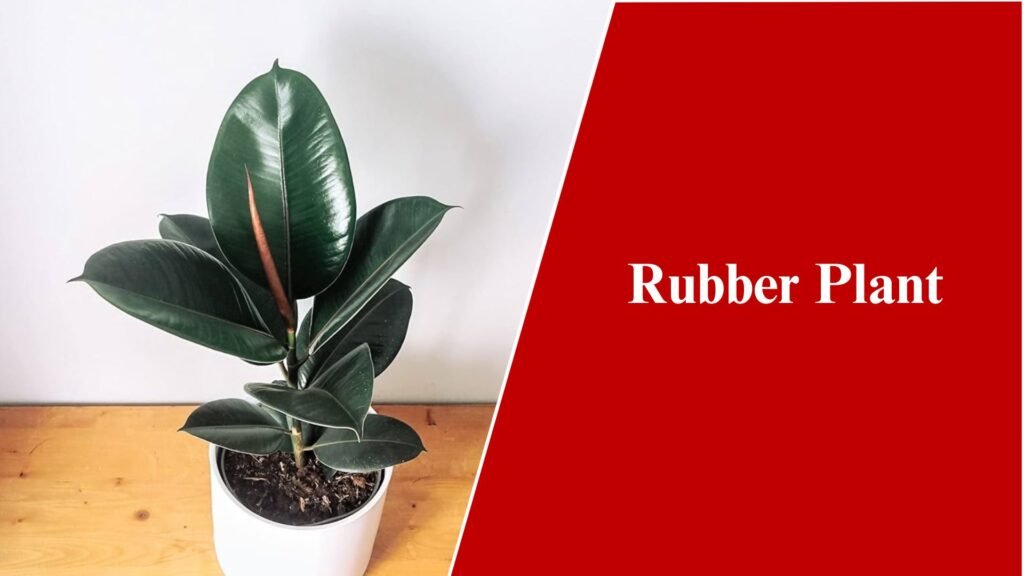
This plant is best in areas that require tall and less-spreading plants. It has red-green combinations of hard and shiny leaves, with a single straight and steady stem/trunk. Despite its name, the Rubber plant is not used for rubber extraction, it is named such, after the texture of its leaves. You may also find some variegated varieties of rubber plants that are artificially developed.
The young leaves are curled and red, once it unfurls, it becomes huge and oval, but other young leaves persist inside them when they unfurl and later result in a dense canopy of the plant. The life of these leaves is impressive too. But like many other species of fig, it requires unique wasps to pollinate, and hence its flowers and fruits are rarely observed as a houseplant.
| Common Name | Rubber Plant |
| Scientific Name | Ficus elastica |
| Family | Moraceae |
| Sunlight | Bright/ Indirect |
| Soil | Well-drained, Loamy or Sandy-Loamy |
| Water | Moderate |
| Hardiness zone | 10-12 |
| Height | 2-3 m |
5. Areca Palm
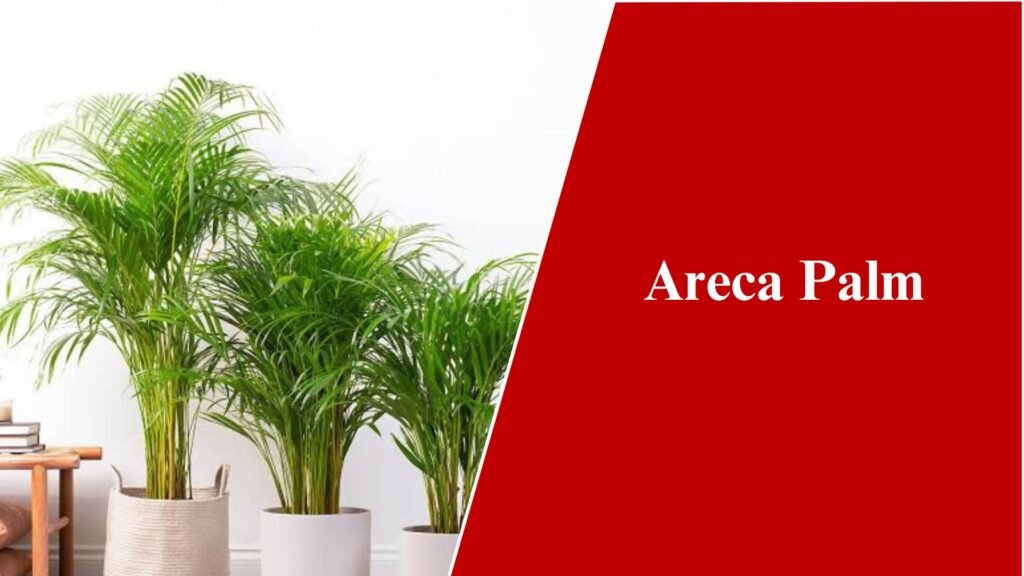
Palms have always been famous as ornamentals, and a few species like the Areca Palm with short height are popular as houseplants. These are elegant and provide a flow in living areas.
In different parts of the world, Areca or Areca nut holds many religious, cultural and cultural values. In some places it signifies respect, in some, it is used as a love potion. Areca nut is also referred to as Betel nut, because of its use in Asian countries with betel leaves for chewing purposes.
While palm brings a tropical atmosphere to your home, it has specific light and soil requirements too. Be careful with these sensitive plants.
| Common Name | Areca Palm |
| Scientific Name | Dypsis lutescens |
| Family | Arecaceae |
| Sunlight | Bright/Indirect |
| Soil | Well-drained and Loamy |
| Water | Regularly |
| Hardiness zone | 10-11 |
| Height | 1.8-3m |
6. Cycas
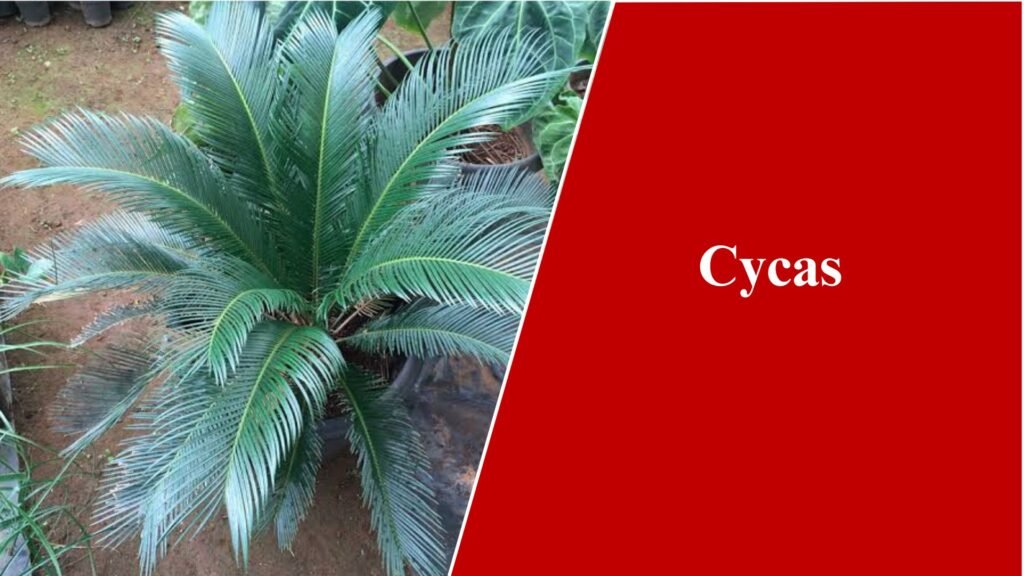
Cycas is often confused with Palms. Although it is Anatomically or even morphologically different from Palms. Cycas is a gymnosperm with open seeds and different female parts as cones, which take years to emerge. Hence, it is difficult to propagate the plant as a layman.
Like other gymnosperms, cycas are supposed to grow up to 6-7 metres, but it takes 50-100 years for the plant to do so. Till then cycas can be used as a houseplant. It will show similar results in outdoor conditions as well. The leaves of cycas are hard and spine-like. The whole plant grows like a rosette and spreads brilliantly in diameter. It looks best on the balcony or as complementary plants with others.
| Common Name | Cycas or Sago Palm |
| Scientific Name | Cycas revoluta |
| Family | Cycadaceae |
| Sunlight | Full Sun/Partial Shade |
| Soil | Well-drained, Sandy |
| Water | Moderate |
| Hardiness zone | 8-11 |
| Height | 2-3 m |
7. Cast Iron Plant
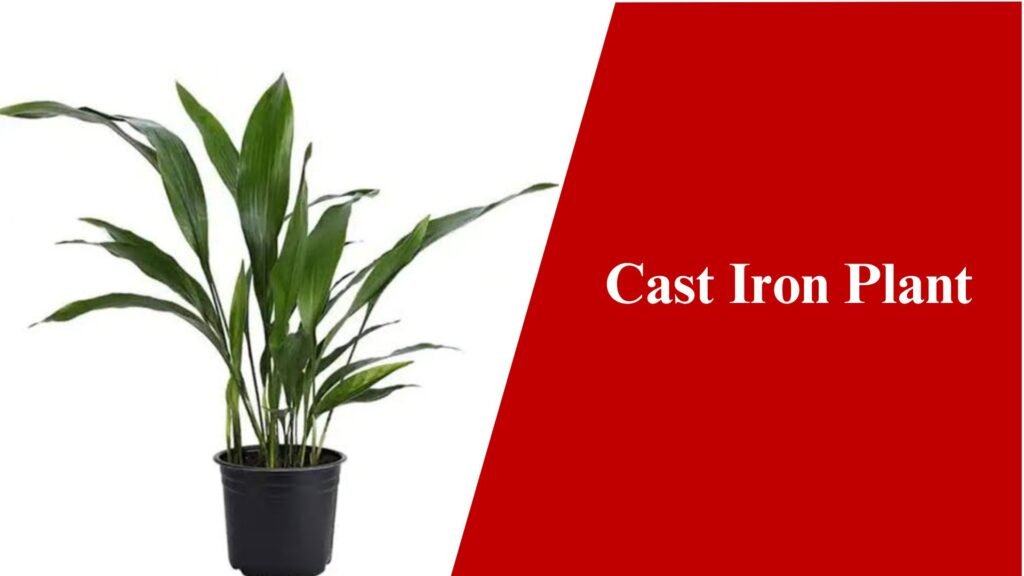
It is a Rhizomatous evergreen perennial plant, the only visible part of the plant is its dense, upright, dark-green leaves. It may also bear creamish-white flowers with eight lobes and maroon lining. It is a hardy plant and known for its growth even after negligence, it can adapt to varied environmental conditions with little nutrient availability. These are also tolerant to insects and pests.
There are many cultivars available in the market, which may vary in leaf pattern or leaf colour which can be used as a variance in houseplants. It is a subtle plant with medium height and less care.
| Common Name | Cast Iron Plant |
| Scientific Name | Aspidistra elatior |
| Family | Asparagaceae |
| Sunlight | Low light to Shade |
| Soil | Well-drained, loamy soil |
| Water | Moderate |
| Hardiness zone | 7-11 |
| Height | 0.3-0.9m |
8. Dracaena
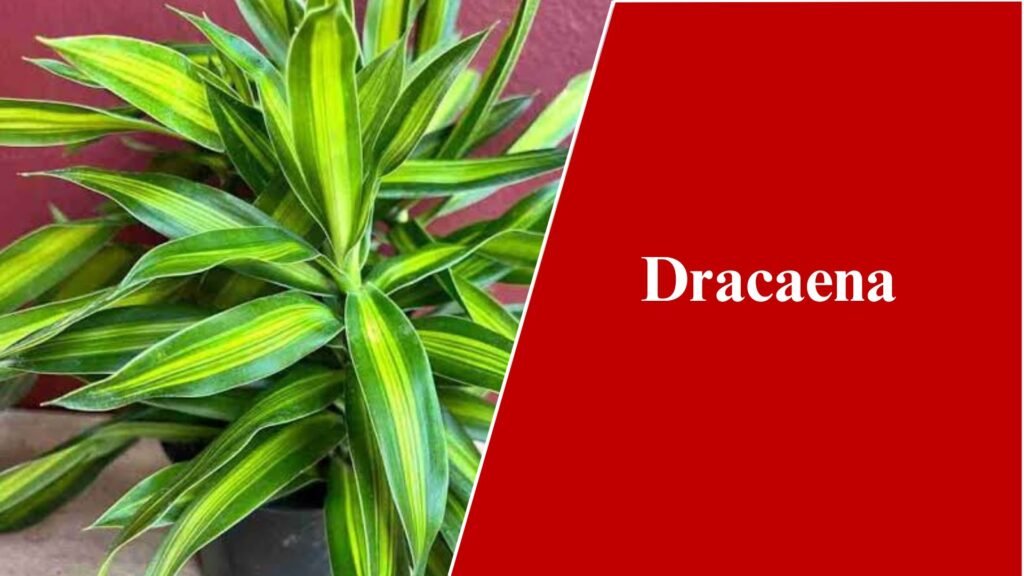
It is one of the most popular houseplants which is often confused with Cordyline when it is young. The house plant Dracena is a shrub with short-heighted green-white thin leaves. Dracaena means female dragon in Greek.
There are more than 140 species of Dracena worldwide, which are classified in terms of their growing habit. The first ones are tree type, which has stems and branches above the ground, such as Dracaena fragrans, Dracaena cinnabari, or Dracaena draco, and the second one is Shrub type or Rhizomatous type, with underground stems and leaves emerging out from a single stem-like structure. Use only the Rhizomatous type of Dracena in your house.
| Common Name | Dracaena |
| Scientific Name | Dracaena spp. |
| Family | Asparagaceae |
| Sunlight | Bright, indirect light |
| Soil | Well-drained, loamy |
| Water | Moderate |
| Hardiness zone | 10-12 |
| Height | 1.5-3m |
9. Alocasia
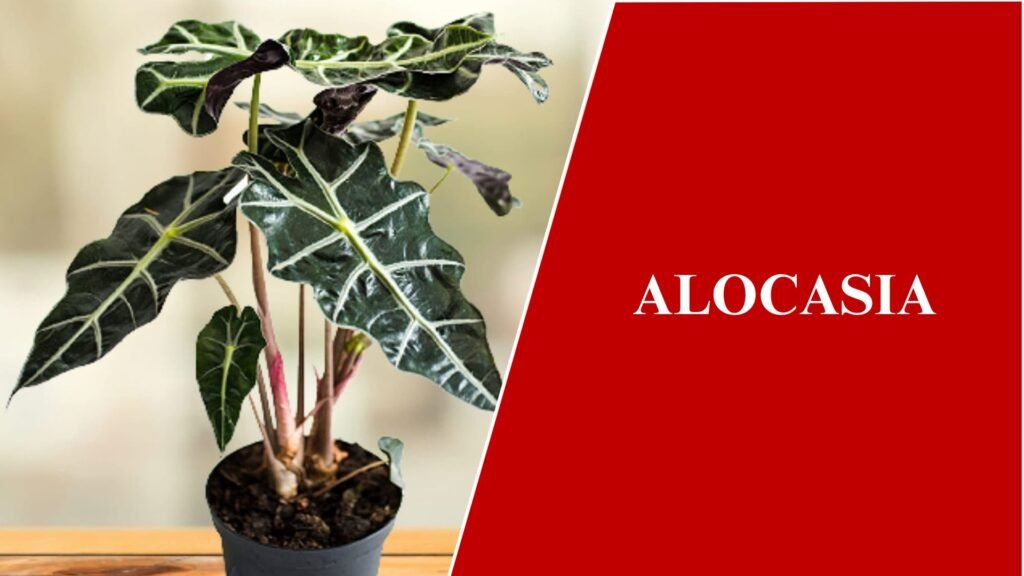
I won’t suggest keeping Alocasia as a houseplant to people who can’t water their plants regularly. After all, Alocasia is shade-lovi,ng but it cannot thrive without water and an ample amount of fertilizer. It has one of the most fascinating leaves and it is a bulbous perennial plant, but not all alocasia species are used as ornamental.
There are more than ninety species of Alocassia, the rhizomes of these plants are edible when properly cooked, but the raw part can cause severe allergy and irritation in the mouth and throat. So be aware when buying Alocasia.
| Common Name | Alocasia, Elephant Ear Plant |
| Scientific Name | Alocasia spp. |
| Family | Araceae |
| Sunlight | Bright, Indirect |
| Soil | Well-drained, peat-based |
| Water | High, always keep the soil moist. |
| Hardiness zone | 10-12 |
| Height | 0.6-1.8m |
10. Peace Lily
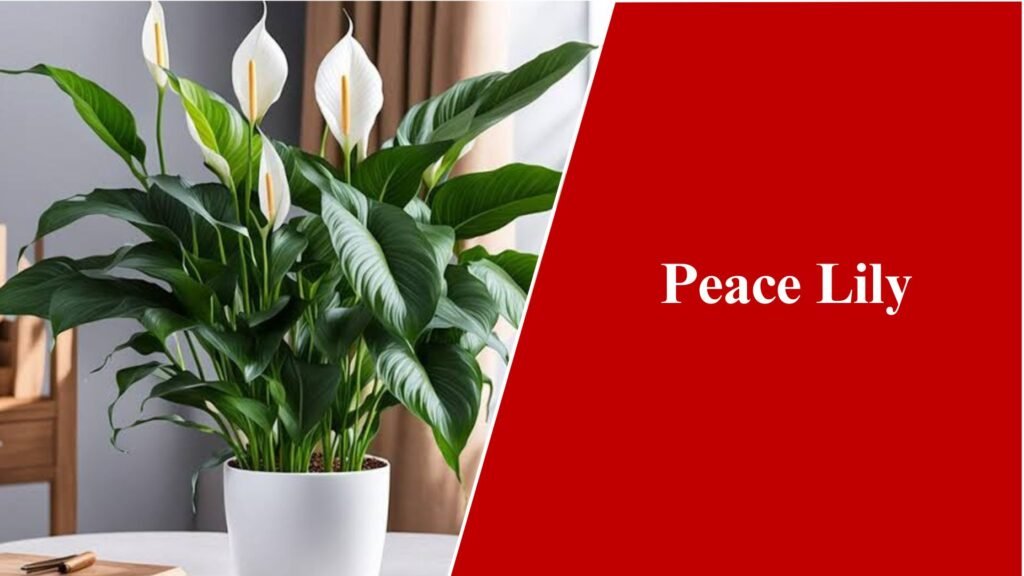
Widely adopted houseplant, peace lily is one of the easiest to grow. Its looks may deceive you for not being interesting but its flowers are one of a kind. The flower arises from the centre of the plant, covered partially by a single, white spathe, inside it is a yellow-coloured spadix, which contains the male and female parts of the flower.
There are around fifty-six species of Peace lily accepted worldwide. The cultivar Mauna Loa is the most popular among all. The spadix of some species is also used in pickling. It is difficult to propagate this plant. Commercially, it is obtained by plant tissue culture and sold after a spray of gibberellic acid to induce early flowering.
| Common Name | Peace Lily |
| Scientific Name | Spathiphyllum spp. |
| Family | Araceae |
| Sunlight | Low to Bright, indirect light |
| Soil | Well-drained, loamy |
| Water | High, keep consistent moisture. |
| Hardiness zone | 10-12 |
| Height | 0.6-1m |
11. Fiddle-leaf Fig
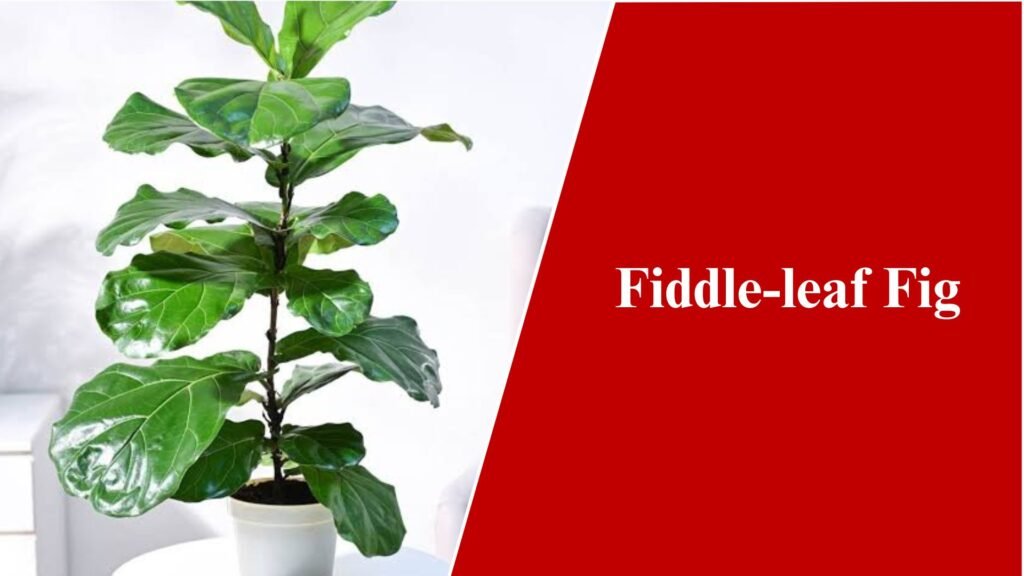
Fiddle-leaf fig is one of the largest houseplants you may come across. These grow up to three metres indoors and about fifteen metres outdoors, in about 5-6 years only.
As the name suggests this fig plant has fiddle-like leaves with a steady stem. You can cut the stem when you want to trim it or structure it, but you must keep in mind that the new leaves will start emerging from the areas wherever you will make a cut. And always use gloves while doing so, because the exudates released by this plant can cause multiple skin reactions, causing itching and discomfort.
With its continuous change in size, repotting shouldn’t be neglected. If you want a plant for your terrace area or if you want to create indoor jungles, then this is the right plant for you.
| Common Name | Fiddle leaf fig |
| Scientific Name | Ficus lyrata |
| Family | Moraceae |
| Sunlight | Bright/Indirect |
| Soil | Well-drained, loamy |
| Water | Moderate |
| Hardiness zone | 9-11 |
| Height | 2-3 m |
12. Snake Plant
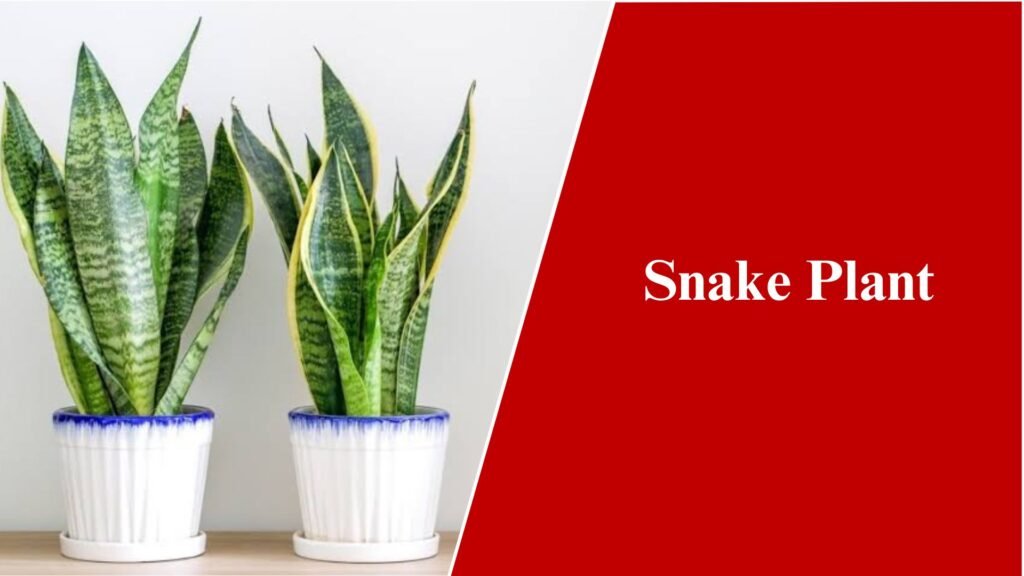
You might have seen these plants multiple times in many places, because it is so easy to multiply them, and its survival rate is high too. There are only leaves to see in this plant which grow upright from the soil with pointed tips at the end. There are many cultivars of snake plants available in nurseries with different patterns and colours.
It is named as such because of the snake’s skin-like pattern and the posture of the leaves. You can obtain a new plant from a single leaf cutting or mums emerging near the roots in a mature plant.
| Common Name | Snake Plant, Mother-in-law’s Tongue |
| Scientific Name | Sansevieria trisfasciata |
| Family | Asparagaceae |
| Sunlight | Low-bright, Indirect Sunlight |
| Soil | Well-drained, Sandy |
| Water | Minimal water when soil becomes completely dry. |
| Hardiness zone | 9-11 |
| Height | 0.5-1.2m |
13. Dieffenbachia
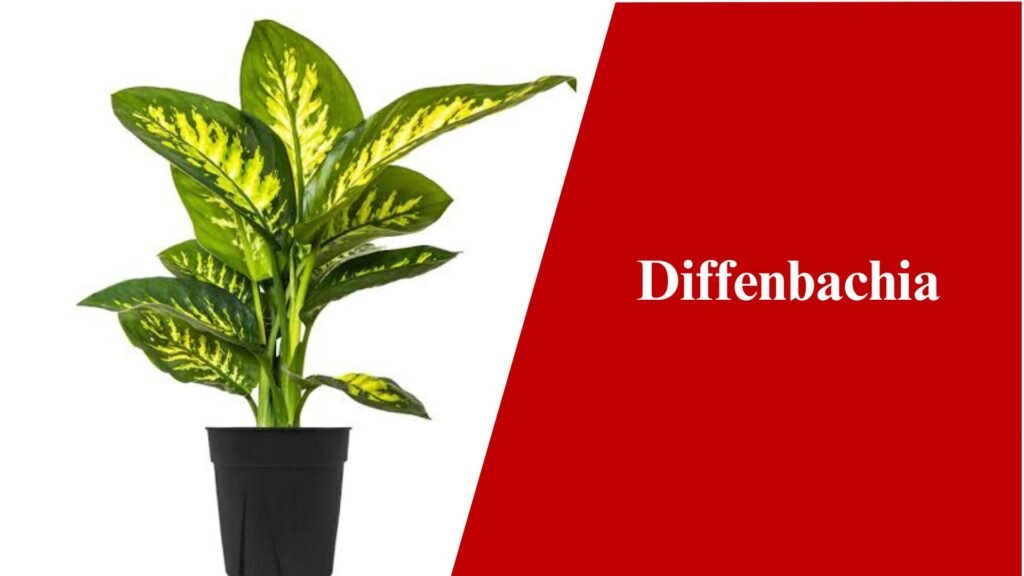
You will fall in love with this plant, after glancing into its beautiful foliage with white spots all over the lamina. It has an upright stem and large leaves. Aglaonema, a similar plant with a short height is its close competitor, which is comparatively short with more spots.
Dieffenbachia is a popular houseplant because it thrives best in shady areas with fewer water requirements, but on the other side, it is highly toxic when ingested due to its cell-producing raphides, a chemical that can cause irritation, numbness, or drooling, which makes it unsuitable for pets and children.
| Common Name | Dieffenbachia, Dumb Cane |
| Scientific Name | Dieffenbachia spp. |
| Family | Araceae |
| Sunlight | Bright, Indirect |
| Soil | Well-drained, loamy |
| Water | Regularly, keep the soil moist. |
| Hardiness zone | 10-12 |
| Height | 1-2 m |
14. Aglaonema
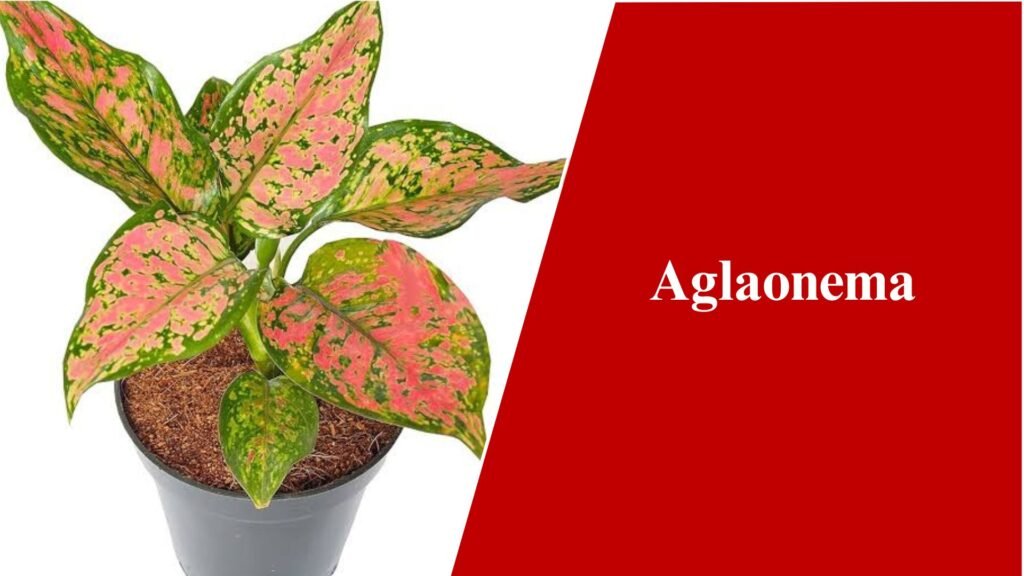
Aglaonema is quite similar to Dieffenbachia in terms of animal toxicity and spot-like pattern. But the spots on dieffenbachia are uneven, while in aglaonema the leaf whitens from midrib and then also produces spots in other parts including the stem.
The flower of Aglaonema is Spadix which is short and later produces red berries. It is intolerant to outdoor conditions, frost, or excessive sunlight. To prolong the life of the plant, remove the emerging inflorescence. It can also be propagated through stem cuttings. Be cautious of the soil where Aglaonema grows because it attracts nematodes, and hence its health declines. So it is best to grow them in pots only.
| Common Name | Aglaonema, Chinese Evergreen |
| Scientific Name | Aglaonema spp. |
| Family | Araceae |
| Sunlight | Low-Bright, Indirect |
| Soil | Well-drained, loamy |
| Water | Moderate |
| Hardiness zone | 10-12 |
| Height | 0.5-2m |
14. Calathea
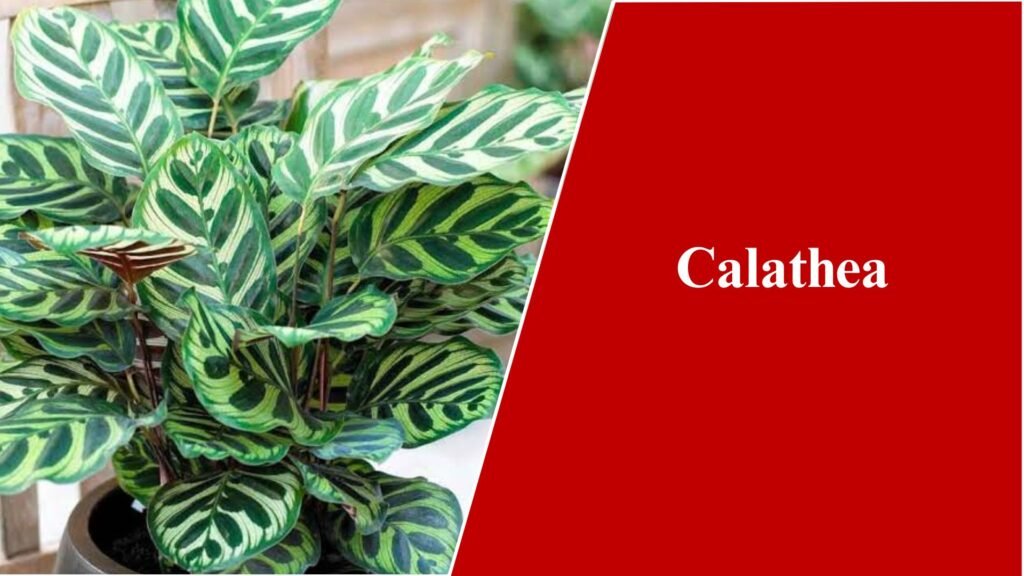
Calthea has feather-painted leaves. There are many species with white, red, pink, or orange varieties. Although the beauty of this plant is incomparable, its need for proper temperature and lighting is troublesome. In addition, it needs constant moisture but improper drainage will kill the plant in a short time.
It also bears some attractive yellow or purple flowers in summer. The best method to cultivate Calathea is tissue culture. As a houseplant, it can be used as table decor or on windowsill.
| Common Name | Calathea, Prayer Plant, Maranta |
| Scientific Name | Calathea spp. |
| Family | Marantaceae |
| Sunlight | Bright, Indirect or shade |
| Soil | Well-drained, peat-based |
| Water | High, keep the soil consistently moist. |
| Hardiness zone | 10-12 |
| Height | 0.3-0.9m |
Conclusion
It doesn’t matter if you live in a small house, in a big apartment or even in a palace, as long as you have plants nearby, every part of your life will feel closer to nature. To bring this kind of positivity around your life we have discussed fifteen types of houseplants with big leaves in this article. Hopefully, it may have been useful to you in the selection of plants for your empty spaces.
These plants will never disappoint you, if you have children at home, then these will help in educating them while continuously functioning as an air purifier.

